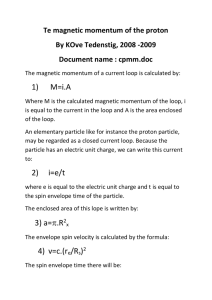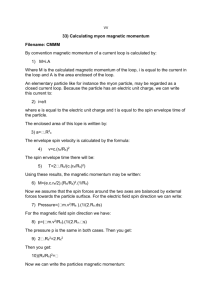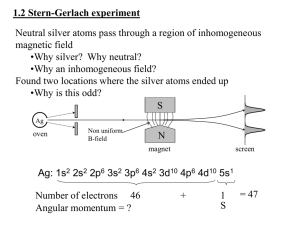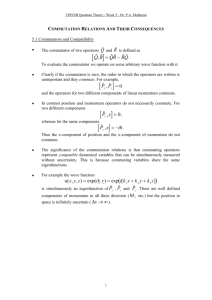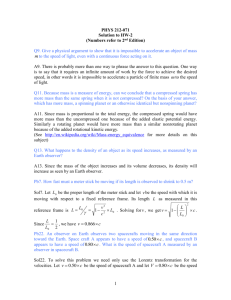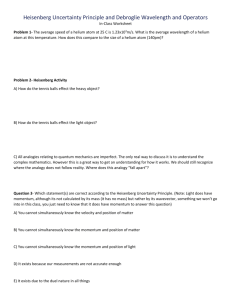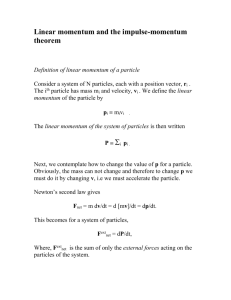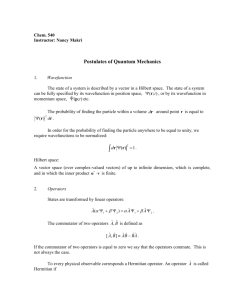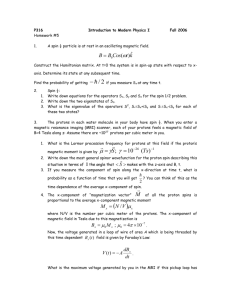Commuting and non-commuting operators
advertisement
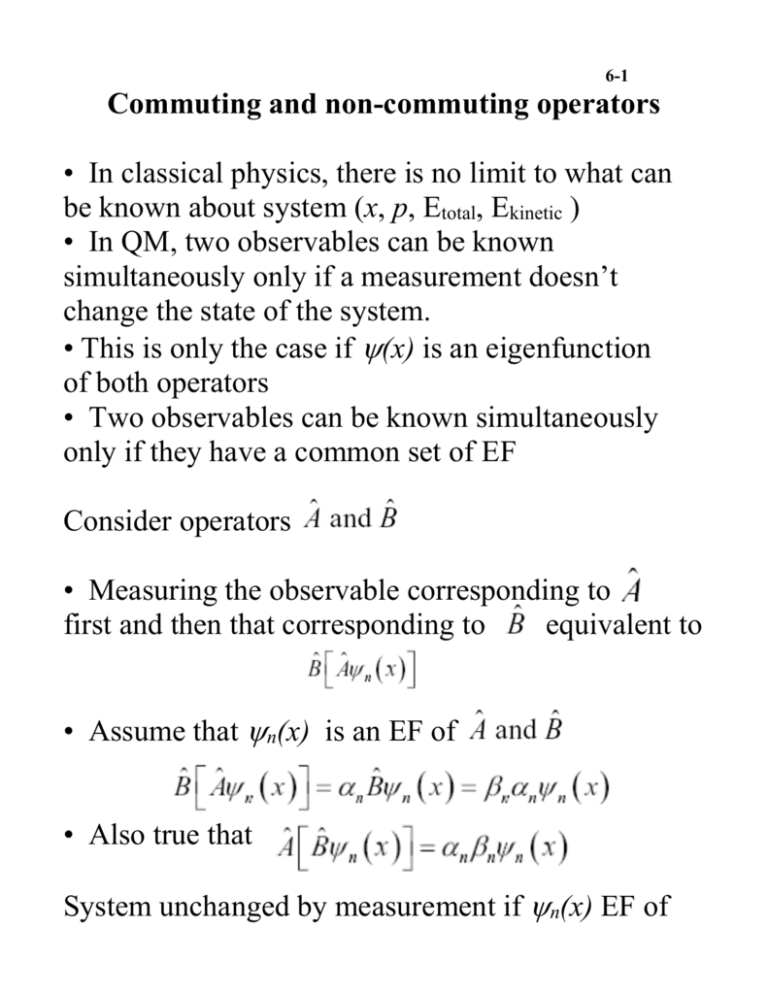
6-1 Commuting and non-commuting operators • In classical physics, there is no limit to what can be known about system (x, p, Etotal, Ekinetic ) • In QM, two observables can be known simultaneously only if a measurement doesn’t change the state of the system. • This is only the case if (x) is an eigenfunction of both operators • Two observables can be known simultaneously only if they have a common set of EF Consider operators • Measuring the observable corresponding to first and then that corresponding to equivalent to • Assume that n(x) is an EF of • Also true that System unchanged by measurement if n(x) EF of both operators! 6-2 • In this case • Two operators that have a common set of EF are said to commute. • To test this for an arbitrary function f(x). If then the operators commute. is called the commutator. • Example: Do NO! commute? 6-3 Example: Do commute? Evaluate commutator = =0 only for free particle 6-4 The Stern-Gerlach Experiment Silver atom beam in inhomogeneous magnetic field Atoms are deflection determined by z component of magnetic moment, mz. z component is either “up” or “down” •Note that spin comes out of relativistic QM No field With field 6-5 • Classically, all mz values allowed. • QM operator “measure z component of magnetic moment, mz” • Experiment shows mz is quantized Only two values possible (up & down only) • Means there are two eigenfunctions, and • Eigenvalues: equal magnitude; opposite sign • Most general wavefunction is a linear combination of these EF’s Review: page 40, equation 3.6 and discussion Note: misprint on equations 6.2 and 6.3, take out the Experiment shows equal number of “spin up” and “spin down” so, Before entering magnet (superposition of states) After measurement wavefunction “collapses” to either or . 6-6 Now add second magnet at 90º Operator “measure x component of magnetic moment, mx” Experimental results Other than quantization, this result seems reasonable Since there was no selection for mx in the first magnetic. Now for the weird part. Add a 3rd magnet, back in the z direction. What does your intuition tell you the result will be? 6-7 Might think that since the mz’s were separated by the first magnet that these components would stay the same throughout. You’d be wrong. Experiment shows: The second measurement in the x direction changes the system. Wavefunction again becomes superposition of both possible eigenfunctions and . So both eigenvalues, “spin up” and “spin down” will be measured. 6-8 Conclusions from S-G experiment • Operators “measure the z component of the magnetic moment” and “measure the x component of the magnetic moment” do not commute. • Can’t know both components simultaneously. • Unlike classical physics, measurement process changed the state of system. Heisenberg Uncertainty Principle • Recall we showed that position and momentum operators do not commute. • We cannot know momentum and position simultaneously and exactly. • Consider free particle for which momentum exactly known ( is an EF of ). 6-9 Recall we normalized this is chapter 4. Probability of finding particle at x is given by • Probability is independent of x • Equally likely to find particle anywhere. • Complete uncertainty about position; total certainty about momentum. • Can’t calculate trajectory like in classical physics! 6-10 Create particle with limited certainty in momentum. (Some uncertainty in the momentum.) Do so by superposing plane waves This function is not an EF of the momentum operator. The momentum is somewhere in range What is P(x) for this wave function? Result is shown by red curve. 21 waves shown Red curve is their sum squared Now the position is more certain! 6-11 If you added an infinite number of waves together, the probability for the position would go to the outline of the peaks. Heisenberg quantified the relationship. Heisenberg uncertainty principle 6-12
